Three women scientists bring expertise in fire management, fishing, frogs
SIT Study Abroad is pleased to welcome five new academic directors on programs in our 2019-20 portfolio. These outstanding leaders in their fields include four women—three scientists and a historian who focuses on gender and sexuality—and a journalist and researcher with deep experience in North Africa.
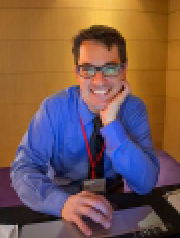
Daniel Lynx Bernard
Morocco: Field Studies in Journalism and New Media
Dan is a former newspaper reporter and online news editor who has worked in the Middle East and North Africa since 2001 as a consultant to projects strengthening media and civil society. He served as Egypt country director for the International Center for Journalists, overseeing training and exchange programs in the MENA region emphasizing the use of digital tools for public service journalism. Dan has an MP from the University of Minnesota Humphrey School of Public Affairs and a BS in communications and news-editorial journalism from the University of Illinois Urbana-Champaign. He has taught news and feature journalism at the University of North Carolina at Chapel Hill and the University of Minnesota, Twin Cities. Based in Morocco since 2017, Dan has researched the role of civil society in local governance and social issues.
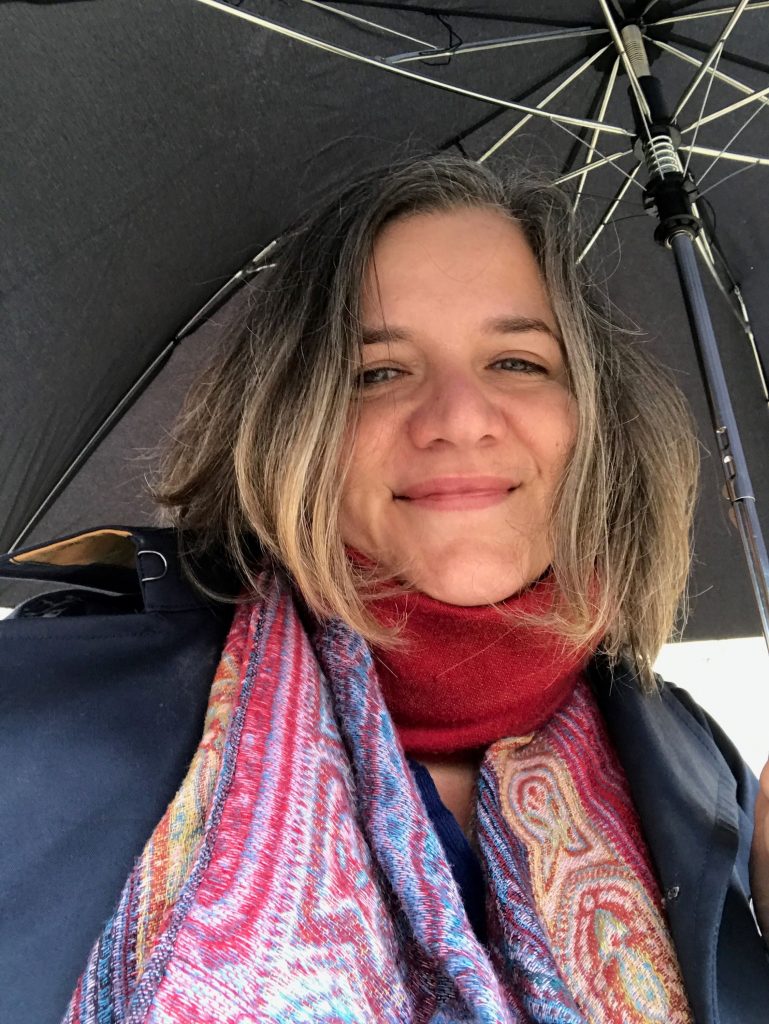
Dr. Jana Byars
Netherlands: International Perspectives on Sexuality and Gender
Jana holds a PhD in history from Penn State University. She is the author of Informal Marriage in Early Modern Venice (Routledge, 2018), the editor of Monsters and Borders in the Early Modern Imagination (Routledge, 2018), and the translator of Girolamo Benzoni’s 1565 travel narrative History of the New World (Penn State Press, 2017). She has also written reviews and articles about sexuality and gender in Europe. She comes to SIT after 20 years in American higher education, teaching at Iowa State, Whitman College, Marquette, Penn State, and Western Michigan. Her current research centers on sex work, rape, and questions of consent in a modern European and American context. Jana is a native Michigander happily living in Amsterdam.

Dr. María Gowland
Argentina: People, Environment, and Climate Change in Patagonia and Antarctica
Born and raised in Ushuaia, Argentina, María holds a PhD in biological sciences from the University of Buenos Aires. She studied for her undergraduate degree in the Patagonian city of Puerto Madryn and returned to Ushuaia to carry out her PhD research on fishery and the reproductive biology of the Beagle Channel King Crab. María has been a member of the Marine Crustaceans Laboratory of the Austral Center for Scientific Research since 2010. María’s research interests include the perspectives, knowledge, and needs of the fishing sector and other stakeholders in a fundamental partnership for real success in natural resource management. Since 2012, María has been a math, ecology, conservation, and science professor at the National University of Tierra de Fuego and supervised students in field and laboratory internships.
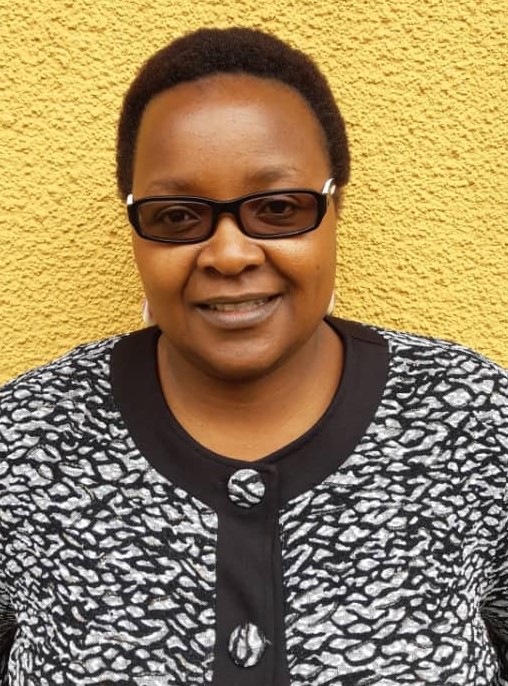
Dr. Oliver Nyakunga
Tanzania: Wildlife Conservation and Political Ecology
Oliver holds a doctorate in fire and grazing effects on vegetation from the Ca’ Foscari University of Venezia in Italy; a master’s degree in environmental science from UNESCO-IHE Institute for Water Education, The Netherlands; and a master for education for sustainability from the London South Bank University United Kingdom. Her research interests center around wildlife ecology, wildlife management, water resources and invasive species, and she has published articles on various conservation issues. Oliver has more than 17 years of teaching experience in the discipline of wildlife management and conservation. For more than six years, she has worked within the wildlife sector in Tanzania. Prior to serving as academic director with SIT, she led field training trips to protected areas in Tanzania for students from College of African Wildlife Management, Mweka; Manchester Metropolitan University (UK); and Oshkosh Wisconsin University (USA).
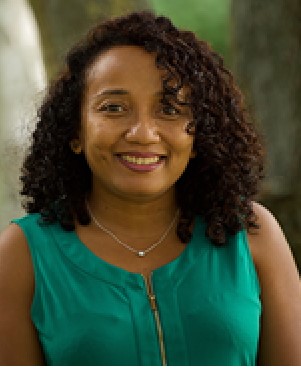
Dr. Andolalao Rakotoarison
Madagascar: Biodiversity and Natural Resource Management
Ando completed her master’s degree in biology in 2011 at the University of Antananarivo. She received her PhD in 2017 at the Technical University of Braunschweig, Germany, with a specialization in taxonomy revision of the microhylid cophyline frogs from Madagascar. In 2018, she became a lecturer at an affiliate institution of the University of Antananarivo at Soavinandriana, Itasy, Madagascar. The same year, she was appointed co-chair of the Amphibian Specialist Group Madagascar, a network of national and international research specialists representing the Malagasy government, universities, and NGOs. For the past eight years, Ando’s research has focused on the resolution of the enormous taxonomy gap within the Malagasy cophyline subfamily by maximizing taxonomy revision. This revision will contribute to the establishment of a conservation strategy for each nominal species.
Dr. Rakotoarison is a Malagasy researcher. She completed her master’s degree in biology in 2011 at the University of Antananarivo. She received her PhD in 2017 at the Technical University of Braunschweig, Germany, with a specialization in taxonomy revision of the microhylid cophyline frogs from Madagascar. In 2018, she became a lecturer at an affiliate institution of the University of Antananarivo at Soavinandriana, Itasy, Madagascar. The same year, she was appointed co-chair of the Amphibian Specialist Group Madagascar where she coordinates a network of national and international research specialists representing the Malagasy government, universities, and NGOs. For the past eight years, her research has focused on the resolution of the enormous taxonomy gap within the Malagasy cophyline subfamily by maximizing taxonomy revision. This revision will contribute to the establishment of a conservation strategy for each nominal species.
Courses Taught
Biodiversity and Natural Resource Management Seminar
Environmental Research Methods & Ethics
Selected Publications
Rakotoarison, A., Hasiniaina, A. F., Glaw, F. & Vences, M. (2024): A new miniaturized species of leaf chameleon, genus Brookesia, from a littoral forest fragment in eastern Madagascar. – Zootaxa 5506: 533-547. DOI: 10.11646/zootaxa.5506.4.3
Gabriel, H., Rothe, L.-D., Köhler, J., Rakotomanga, S., Edmonds, D., Galán, P., Glaw, F., Lehtinen, R. M., Rakotoarison, A. & Vences, M. (2024): Unexpected diversity and co-occurrence of phytotelmic frogs (Guibemantis) around Andasibe, one of the most intensively surveyed amphibian hotspots of Madagascar, and descriptions of three new species. – Zootaxa 5397: 451-485. DOI: 10.11646/zootaxa.5397.4.1
Rakotoarison, A., Scherz, M.D., Mullin, K.E. Crottini, A., Petzold, A., Ranjanaharisoa, F.A., Maheritafika, H.M.R., Rafanoharana, J.M., Raherinjatovo, H., Andreone, F., Glaw, F. & Vences, M. (2023): Gray versus yellow ventral coloration: Identity, distribution, color polymorphism and molecular relationships of the microhylid frog Platypelis mavomavo Andreone, Fenolio & Walvoord, 2003. – Zootaxa 2352: 221-234. DOI: 10.11646/zootaxa.5352.2.4
Scherz, M.D., Schmidt, R., Brown, J.L., Glos, J., Lattenkamp, E.Z., Rakotomalala, Z., Rakotoarison, A., Rakotonindrina, R.T., Randriamalala, O., Raselimanana, A.P., Rasolonjatovo, S.M., Ratsoavina, F.M., Razafindraibe, J.H., Glaw, F. & Vences, M. (2023) Repeated divergence of amphibians and reptiles across an elevational gradient in northern Madagascar. Ecology and Evolution, 13(3):e9914. DOI: 10.1002/ece3.9914
Scherz, M.D., Crottini, A., Hutter, C.R., Hildenbrand, A., Andreone, F., Fulgence, T.R., Köhler, G., Ndraintsoa, S.H., Ohler, A., Preick, M., Rakotoarison, A., Rancilhac, L., Raselimanana, A.P., Riemann, J.C., Rödel, M.-O., Rosa, G.M., Streicher, J.W., Vieites, D.R., Köhler, J., Hofreiter, M., Glaw, F. & Vences, M. (2022) An inordinate fondness for inconspicuous brown frogs: integration of phylogenomics, archival DNA analysis, morphology, and bioacoustics yields 24 new taxa in the subgenus Brygoomantis (genus Mantidactylus) from Madagascar. Megataxa, 7(2):113–311. DOI: 10.11646/megataxa.7.2.1
Rakotoarison, A., Glaw, F., Rasolonjatovo, S.M., Razafindraibe, J.H., Vences, M. & Scherz, M.D. (2022) Discovery of frogs of the Stumpffia hara species group (Microhylidae, Cophylinae) on Montagne d’Ambre in northern Madagascar, with description of a new species. Evolutionary Systematics, 6(1):21–33. DOI: 10.3897/evolsyst.6.76382
Scherz, M.D., Schmidt, L., Crottini, A., Miralles, A., Rakotoarison, A., Raselimanana, A.P., Köhler, J., Glaw, F. & Vences, M. (2021) Into the Chamber of Horrors: A proposal for the resolution of nomenclatural chaos in the Scaphiophryne calcarata complex (Anura: Microhylidae), with a new species-level phylogenetic hypothesis for Scaphiophryninae. Zootaxa, 4938(1):392–420. DOI: 10.11646/zootaxa.4938.4.2
Rakotoarison, A., Scherz, M.D., Köhler, J., Ratsoavina, F.M., Hawlitschek, O., Megson, S., Vences, M. & Glaw, F. (2020) Frogs of the genus Platypelis from the Sorata massif in northern Madagascar: description of a new species and reports of range extensions. Zoosystematics and Evolution, 96(1):263–274. DOI: 10.3897/zse.96.47088
Current Research Interests
Taxonomic revision of Madagascar’s amphibian and reptile using an integrative approach
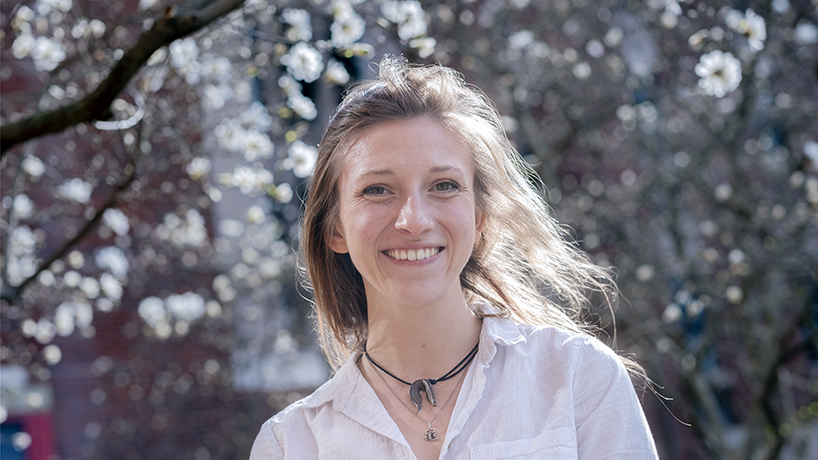
by Jessica Rogen
Eva Colberg wants you to gather up a group of your friends, settle down on a long, wooden bench at the Urban Chestnut Brewery and crack open a well-hopped brew.
That beer – it’s for science.
The happy-hour vibe, the University of Missouri–St. Louis biology PhD student hopes, will make the difference for Science Distilled, a bimonthly event Colberg founded with fellow PhD student Emma Young. The program alternates with and is based on the formula of Astronomy on Tap: two informal 15-minute science talks broken up by trivia and drinks.
UMSL’s Whitney R. Harris World Ecology Center, where Colberg is a graduate assistant and researcher in the Marquis lab, helped get Science Distilled off the ground with a sponsorship.
“People are a little bit more relaxed and are not intimidated by the science as much,” she said. “It’s also a way for people who don’t get much attention to have an outlet. We really want to give the sci-comm spotlight to underrepresented and marginalized groups, namely early career scientists, women, people of color and LGBTQ+.”
Bringing digestible science to people and empowering scientists to do so is such a sizable part of Colberg’s thoughts that she regularly calls it out in one form or another. It’s an element or an aspect or a component – but it’s always the “human” part of science. To that end, Colberg helped organize a science communication workshop in lieu of the Biology Graduate Student Association’s traditional research fair last semester and has taken up the mantle as the first Harris Center social media/outreach graduate assistant, a position tasked with building awareness on campus.
“When you talk to undergrads here, a lot of them don’t know it exists or maybe they’ve heard the name, but they don’t know what it does,” she said. “They don’t realize that they, too, can be part of it and apply for grants and do research and get all these great benefits. That’s a real tragedy.”
She’s at work creating a backlog of student feature content including fieldwork photos as well as website improvements and campuswide posters. She hopes, ultimately, to see more undergraduate involvement.
Colberg got involved and interested in ecology thanks to an upbringing in Alaska. Growing up outside of the major cities, she spent a lot of time outside, where it was “wonderful but cold.” She initially thought she’d be on the policy side of conservation and, as a high school senior, did an internship with Sen. Lisa Murkowski.
As a freshman, Colberg signed up for an introductory ecology, environment and ecosystems course thinking that having that background knowledge would enable her to be a more effective policymaker. Turned out she’d inadvertently signed up for the biology program’s weed-out course.
“It was so difficult,” she recalled. “At the same time, it was like, this challenges me in such a novel way, and I love it so much. I want to be able to work outside and do something more than just sit at a desk and talk to people. I want to have some sort of fieldwork in my life.”
Studying abroad as part of SIT Madagascar: Biodiversity and Natural Resource Managementcemented her decision to study ecology. While there, Colberg took note of the multiplicity of Missouri Botanical Garden field sites that employed the Malagasy people for nurseries, research, planting and extensive community-based programs.
In her post-college gap year, which she dedicated to field jobs and graduate school applications, Colberg found herself working for the Missouri Ozark Forest Ecosystem Project and living in the Ozarks. She started volunteering for the Litzsinger Road Ecology Center, which is owned by the Missouri Botanical Garden, and started wondering about nearby graduate programs.
St. Louis was a simple two-and-a-half hour drive – nothing to an Alaskan – so she commuted up to see if there was any way to get involved with the garden and go to school locally.
“UMSL really seemed like the best fit,” Colberg said. “I’m broadly interested in plant/animal interactions, and we have several labs that are doing that so, in my mind, it was the only place in St. Louis that seemed attractive.
“It also felt like the best fit in terms of people. It’s a very welcoming community. I think there’s a very healthy mindset in terms of work-life balance and people really love what they do and are passionate and understanding when life comes up.”
At UMSL, Colberg started her doctorate in the lab of her advisor, Professor Robert J. Marquis. Her research explores how Missouri ants disperse the seeds of spring ephemerals: plants that bloom quickly then the above-ground parts fade, leaving the roots alive. She’s investigating how land managers’ burning regimes, an essential aspect of fire ecology, affect seed growth. By examining burning in different conditions, Colberg hopes to discover the fate of a seed under any fire circumstance.
For the other part of her research, she will be talking with land managers to unpack their terminology and thinking processes in order to possibly propose a unified language. So that any one manager will be able to effectively communicate with any other.
Science communications – it’s a theme.
Communication isn’t her only touchstone, however. She recently sat down with Marquis, who asked Colberg what motivated her and her research: ecology, evolution or something else?
The answer jumped to Colberg’s mind immediately.
“That was a key moment because it was like, oh, of course it’s conservation,” she recalled. “Everything that I do is motivated by wanting to make some sort of change for conservation.”
Lucie coordinates the program’s rural homestays. A native of Andasibe, Lucie holds a general certificate in English and has taught English at a public college. She is an environmental tour guide and a member of Mitsinjo, a local NGO involved in rural development and local environmental and conservation activities.
Martine is responsible for coordinating the program’s urban homestays. She has lived in Ivandry for more than 35 years and is the wife of the former president of Fokontany of Ivandry. A retired social worker, Martine still volunteers with the Ministry of Health and the Red Cross Society on issues involving mothers and children such as vaccination and HIV/AIDS awareness and prevention.
A pharmacologist and pharmacokineticist, Fana holds a PhD in pharmaceutics application from the Ecole de Pharmacie at the Université Catholique de Louvain en Woluwé in Brussels, Belgium. On this program, he teaches standardization techniques of traditional remedies. As a senior lecturer and researcher at the University of Antananarivo, Fana established and is director of the Laboratoire de Pharmacologie Générale, de Pharmacocinétique et de Cosmétologie. He is responsible for the postgraduate program of the Département de Physiologie Animale et Pharmacologie. He has served as the general director and secretary general of Madagascar’s Ministry of Higher Education and Scientific Research.
A pharmacologist and aesthetician, Patricia is the director of the Laboratoire de Pharmacologie Générale, de Pharmacocinétique et de Cosmétologie (LPGPC), Faculty of Sciences, in University of Antananarivo, Madagascar. She is responsible for the pharmacology course at the Department of Animal Physiology, Pharmacology and Cosmetology (PPC) at the University of Antananarivo, where she earned a DEA and a PhD in pharmacology. She assists in program coordination, provides overall program support, and occasionally serves as advisor to SIT students whose ISPs involve laboratory investigation of medicinal plants used in traditional medicine. A recipient of the Prince Bernhard Scholarship for Nature Conservation in 1993, Patricia has worked with rural communities in Madagascar and Uganda on health and conservation issues. She served as an advisor to Mbarara University of Science and Technology in Uganda as it developed a pharmacology laboratory and rural healthcare program.
he/him/his
A botanist by training and an ethnobotanist by profession, Dr. Quansah has a PhD in pteridology from the University of London, Goldsmiths College, and an MS in botany, a BS Honors, and a diploma in education from the University of Cape Coast, Ghana. Since 2008, he has served as academic director for the Madagascar: Traditional Medicine and Healthcare Systems summer program. He also served as academic director for the SIT program Tanzania: Zanzibar — Coastal Ecology and Natural Resource Management in 2013–14. Dr. Quansah researches, advises, and lectures on a wide range of topics including integrated healthcare, traditional medicine, biological and cultural diversity conservation, sustainable resource use, and rural development. He has developed an integrated healthcare system approach to healthcare development and bio-cultural diversity conservation. His work has consistently involved local and international public education through radio and TV documentaries and popular/scientific publications. He was awarded the prestigious Goldman Environmental Prize in 2000.
Courses Taught
Ethnobotany
Biodiversity Conservation
Integrated Health Care
Poverty and Health Care
Select Publications
Quansah, N. & Thomas, B.A. (2021). Anisophyllous species of Selaginella in West Africa. FERN GAZ. 21(5) :188-238. Pdf: https://ebps.org.uk/publications/the-fern-gazette/the-fern-gazette-volume-21-part-5/
Randrianavony, P., Quansah, N., Djoudi, R., Quansah, N. A., & Randimbivololona, F. (2020). Anticonvulsant Activity of Hydroalcoholic Extract of Ageratum conyzoides L. (Asteraceae) in Mice. European Scientific Journal, ESJ, 16(18):114-123. https://doi.org/10.19044/esj.2020.v16n18p114
Pdf: Vol 16 No 18 (2020): ESJ Natural/Life/Medical Sciences
Randrianavony P., Reboza A. M, Quansah N., Randimbivololona F. (2017). Hypouricemic activity of Pentopetia androsaemifolium (Apocynaceae) hydro alcoholic extract in mice. European Scientific Journal, ESJ, 13 (36): 340-345. DOI: https://doi.org/10.19044/esj.2017.v13n36
Randrianavony P., Ratsimiala Ramonta I., Andriamalala S.G., Andriamampianina T., Rakotondraibe H.V., Quansah N., Randimbivololona F. (2016). Harungana madagascariensis (CLUSIACEAE) et ulcère gastrique. Ethnopharmacologica 56:62-66
Randrianavony P., Ranaovimanoelina V.J., Quansah N., Randimbivololona F. (2015). Anti-gastric ulcer activity of leaves of Pyracantha angustifolia (Franch.) C. K. Schneid in rats. European Scientific Journal, ESJ, 11 (30): 294-303. https://eujournal.org/index.php/esj/article/view/6369
Randrianavony Patricia, Raharivelonina E.A., Randrianjafitrimo N., Quansah N., Randimbivololona F. (2015). Anti-ulcer activity of the hydroalcoholic extract of Acridocarpus excelsus Juss. (Sariheza) in rats. Am. J. Pharm Tech Res. 5(6):1-8
Quansah Nat & Randrianavony Patricia. (2012). Nature’s Gift to Humanity: Natural Remedies for Selected Common Health Problems. Author House, Bloomington, IN, USA, 56pp. ISBN 978-1-4670-2022-0 (sc).02-17-2012.
Select Presentations
Quansah Nat & Poblete Daniel (2021, September 14 – November 15). Coloniality, Indigenous Knowledge and Healthcare Delivery in the Global South : Chile and Madagascar as Case Studies [Virtual Conference presentation on September 30]. SIT Fall 2021 Critical Conversations Webinar Series
Randrianavony P., Quansah N., & Randimbivololona F. (2021, Octobre 28 – 30). Étude de l’effet de l’extrait de rhizome de Curcuma longa (Zingiberaceae) sur l’asthme chez le cochon d’Inde. [Poster Presentation] JOURNÉES SCIENCES ET APPLICATIONS. Laboratoire Plante Santé dans l’immeuble des Sœurs du Cœur Immaculé de Marie de Diego-Suarez (CIM – D/S)) Fianarantsoa, Madagascar.
Quansah Nat (2021, June 13 – 26). The Integrated Health Care System: Meeting the global goal of health for all [Virtual presentation, June 18]. The Global Solution Lab 2021 Virtual Meeting
Research Interests
Integrated health care systems
People-plant relationships: sustainable resource use
Traditional medicine practices
Biodiversity conservation
Applications open Sept. 15
With undergraduates’ schedules in full swing for the new academic year, it’s not too soon to start thinking about how to make the most of summer 2019. Imagine snorkeling in one of the world’s top diving sites as you study marine ecology in Panama, building career skills with an internship at an NGO in Vietnam, exploring Madagascar’s extraordinary natural environment to learn about traditional medicine, or learning Arabic in Jordan or Morocco.
Those are just some of the many opportunities available through School for International Training (SIT). During summer 2019, SIT Study Abroad is offering 23 programs in 17 countries that will appeal to a wide range of majors and interests, including five skills-building internship opportunities.
Like all SIT Study Abroad programs, each summer program offers academic rigor and an immersive cultural experience within the framework of at least one critical global issue. Applications for these programs open September 15.
New to the SIT Student Abroad summer portfolio this year are:
Colombia: Building a Culture of Peace – Integrate peace studies with Colombia’s cultures through music, dance, and food from the program base in the vibrant, multicultural Caribbean Coast city of Cartagena, a UNESCO World Heritage site.
Vietnam: Nongovernmental Organization Internship – Learn about development and the roles of nongovernmental organizations engaged in social change through this guided internship, which also includes lectures and site visits. Customize this program based on your areas of interest.
SIT summer programs, sorted according to themes, are:
Climate | Environment
Iceland: Renewable Energy, Technology, and Resource Economics
Indonesia: Biodiversity and Conservation in Bali and Borneo
Jordan: Engineering and Design for Sustainable Environments
Nepal: Geoscience in the Himalaya
Panama: Marine Ecology & Blue Carbon Conservation in the Pacific & Caribbean
Tanzania: Climate Change and Sustainability, Mount Kilimanjaro to Zanzibar
Development | Economy | Inequality
India: Agroecology and Food Security in the Himalaya
Panama: Community and Nongovernmental Organizations Internship
Vietnam: Nongovernmental Organization Internship
Global Health
China: Community Health and Traditional Chinese Medicine
India: Traditional Medicine and Healthcare Practices
Jordan: Counseling and Humanitarian Action Internship
Kenya: Public Health in the Tropics Internship
Madagascar: Traditional Medicine and Healthcare Systems
Switzerland: Food Security and Nutrition
Media | Arts | Social Change
Argentina: Art, Memory, and Social Transformation
Migration | Identity | Resilience
Jordan: Intensive Arabic Language Studies
Morocco: Arabic Language and Community Service
Peace | Human Rights | Social Movements
Colombia: Building a Culture of Peace
South Africa: Education and Social Change
South Africa: Social Justice and Activism Internship
Switzerland: International Studies and Multilateral Diplomacy
Uganda and Rwanda: Peace and Conflict Studies in the Lake Victoria Basin
Visit our website for more information on these and all of SIT’s immersive, experiential study abroad opportunities.
SIT Study Abroad Programs
- Madagascar: Biodiversity and Natural Resource Management
- Madagascar: Traditional Medicine and Healthcare Systems (Summer)
